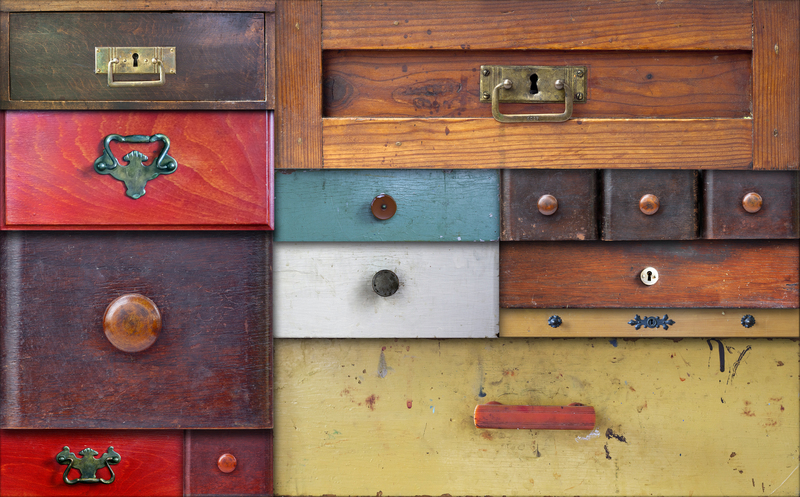Simple Ways to Prepare Pots and Pans for Recycling Day
Do you have a growing collection of old pans and worn out pots taking up valuable cupboard space? If so, you're not alone. Many people are unsure of how to dispose of cookware responsibly. Fortunately, recycling old pots and pans is easier and more environmentally friendly than simply throwing them away. In this comprehensive guide, you'll discover simple ways to prepare pots and pans for recycling day, ensuring you're doing your part for the planet.
Why Recycle Old Pots and Pans?
Recycling cookware is essential for several reasons. Not only does it help reduce landfill waste, but it also allows metals and other materials to be reused in the creation of new products. By recycling, you're conserving natural resources, saving energy, and helping to minimize your carbon footprint. Understanding how to properly prepare your pots and pans for recycling ensures they don't end up in the trash unnecessarily.
Common Materials in Pots and Pans
Before diving into the recycling process, it's helpful to know what your cookware is made of. Most pots and pans fall into one or more of the following categories:
- Stainless Steel: Durable, rust-resistant, and easily recyclable.
- Aluminum: Lightweight, efficient conductor of heat, highly recyclable.
- Cast Iron: Heavy and long-lasting, can be recycled but often best reused.
- Copper: Excellent conductor, valuable for recycling but less common.
- Nonstick or Teflon-coated: Involves some recycling challenges due to coatings.
- Enamel-coated: Metal core with a glassy outer layer, less commonly recycled.
Each of these materials has unique recycling requirements and preparation steps. Below, we'll cover easy methods to prepare cookware for recycling day--no matter the material.

Step-by-Step Guide to Prepare Pots and Pans for Recycling Day
1. Inspect Your Cookware
- Check for Reusability: Before you recycle, ask yourself: could someone else still use this? If the pan is only lightly worn, consider donating it to a local charity or thrift store. Sometimes items with minor scratches or discoloration can find a new home.
- Separate Broken Items: Only recycle pots and pans that are beyond repair or reuse.
2. Remove Non-Metal Parts
- Take off plastic, rubber, or wooden handles: Many recycling centers only accept pure metal. Use a screwdriver or pliers to detach handles or knobs, and dispose of these separately.
- Remove lids with glass or plastic tops: Glass lids are usually recycled with glass, not metal. Metal-only lids can go with the pan.
Tip: If your pot has a silicone handle that can't be removed, check with your local recycling guide or call the recycling center for advice.
3. Clean the Pots and Pans
- Wash thoroughly: Even though toughest stains may persist, ensure all food residues, oils, and grease are scrubbed off before recycling day.
- Degrease: Use a mixture of baking soda and vinegar if needed to remove stubborn oil stains, which can contaminate recycling machines.
4. Determine Appropriate Recycling Method
There are several options for recycling old pots and pans. Choosing the right route ensures the items are processed correctly.
- Scrap Metal Yard: Most cookware, especially if it's all metal, is best recycled as scrap metal. Contact your local scrap yard to check what types they accept and if there's a drop-off schedule.
- Curbside Recycling Program: Some municipalities accept cookware with curbside recycling, but many do not. Always check your local recycling rules to confirm.
- Special Recycling Events or Facilities: Many towns host recycling days for bulkier household items, or have dedicated centers for metals, electronics, and appliances. This is a good way to recycle mixed-material cookware.
5. Sorting by Material
- Group by Type: Keep aluminum pans together, stainless steel together, etc. This may speed up processing at the recycling center and can even be a requirement.
- Remove Nonstick or Teflon Coating: Most recycling facilities do not accept nonstick pans unless the coating is removed. If you have an eco-friendly nonstick pan (usually ceramic), call ahead for recycling instructions.
6. Mark or Label If Required
- Label Unusual Items: If you're dropping off something like cast iron or a copper pot, label the material if requested. Some facilities ask for this to help with sorting.
- Use Clear Bags or Place in Provided Bins: Your local recycling program might have specific instructions about placing metal items in certain bins or bags.
7. Transport Carefully
- Bundle Small Items: If you have many small pans, tie or stack them together to keep your recycling neat.
- Don't Overload Bins: Big or heavy cookware items may need to be taken straight to the recycling depot instead of placing them in your home bin.
What About Pots and Pans With Non-Stick or Teflon Coatings?
Pots and pans with nonstick or Teflon coatings pose a challenge for recycling because most facilities do not process these safely. The best approach:
- Check for Manufacturer Recycling Programs: Some brands offer take-back programs for their own nonstick cookware.
- Contact Local Recycling Centers: Ask if they handle nonstick cookware; if not, they may suggest a nearby facility that does.
- If All Else Fails, Trash as Last Resort: If no recycling options are available, dispose of nonstick pans in the regular waste. In this case, try to use the cookware as long as possible before tossing, to minimize environmental impact.
- Not all "green" coatings are recyclable: Even ceramic-based nonstick pans may have recycling restrictions--always verify first.
Are Enamel-Coated Pans Recyclable?
*Enamel-coated pots and pans* often have a glass-like coating over steel. Most recycling plants want clean metal only, but scrap yards may accept enamel pans if you let them know about the coating. Be sure to check local rules before recycling these types of cookware.
Creative Alternatives to Recycling Cookware
If you're looking for alternative ways to reuse pots and pans before sending them to the recycling center, here are some creative solutions:
- Planters or Flower Pots: Old pots make excellent garden planters. Drill a drainage hole in the bottom and add soil and plants for a rustic look.
- Organizers: Use frying pans or saucepans to organize tools, craft supplies, or office trinkets.
- Bird Baths or Feeders: Large, shallow pans can be repurposed as bird baths or feeders in your garden.
- Kids' Play Kitchen: Safe, clean pans are perfect additions to children's play kitchens or sandboxes. Remove sharp edges first.
- Wall Art: Hang unique or vintage pans on walls for a cozy, retro kitchen vibe.
Repurposing is a fabulous way to extend the life of your cookware before moving on to recycling.
Extra Tips for a Greener Kitchen
- Buy High-Quality Cookware: Investing in better pots and pans means they last longer and reduce waste in the long run.
- Choose Recyclable Materials: Prefer stainless steel, aluminum, or cast iron to plastics or non-recyclable composites.
- Follow Proper Care & Maintenance: With the right cleaning and storage habits, your pots and pans can serve you for years--delaying the need to replace or recycle them.
- Get the Most From Take-Back Programs: Some manufacturers and retailers will take back their own products for responsible recycling or refurbishment. Always check if this service is available when you buy new cookware.
Frequently Asked Questions About Recycling Pots and Pans
-
Can I recycle pots and pans in my blue curbside recycling bin?
Usually not. Most curbside recycling programs don't accept large metal items or "scrap" metal like cookware. Always check with your local program before placing them in your household bin. -
Is it necessary to remove all food and non-metal parts?
Yes. Any plastic, rubber, or wooden parts as well as food residues should be removed to ensure the cookware is processed efficiently and safely at the recycling plant or scrap yard. -
How do I recycle cast iron pans?
Cast iron is highly recyclable. If it's beyond repair or donation, take it to a scrap metal facility. Cast iron pans are often valuable because of their weight and purity. -
What should I do with nonstick pans when recycling isn't an option?
If your nonstick pan cannot be recycled or donated, dispose of it in your regular trash as a last resort. Try to use it for as long as safely possible to reduce waste.

Summary: Best Practices for Recycling Pots and Pans
To sum up, the best practices for preparing pots and pans for recycling day are:
- Check if items can be reused or donated first.
- Remove all non-metal parts and wash thoroughly.
- Sort by material type.
- Contact your local recycling center or scrap yard for specific instructions.
- Transport items safely and label if required.
- Consider creative upcycling before recycling.
Conclusion: Prepare Your Cookware for a Greener Tomorrow
Recycling your old pots and pans may seem like a small step, but it plays an important role in reducing waste and supporting the environment. By following these simple, actionable steps, you ensure that your cookware is ready for its next life--whether that's in a new kitchen, a piece of public art, or as raw material for manufacturing.
Remember, the key to responsible recycling is preparation and awareness. The next time you declutter your cookware collection, use these simple ways to prepare pots and pans for recycling day and feel good about making a sustainable choice for your home and your planet!
```